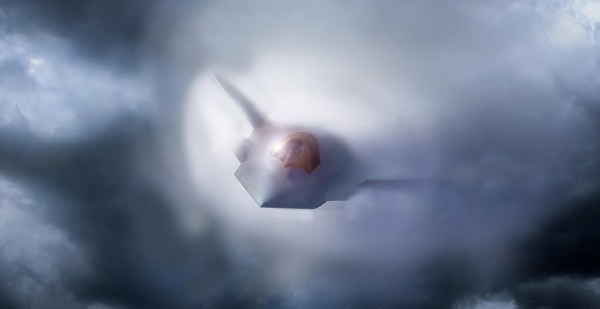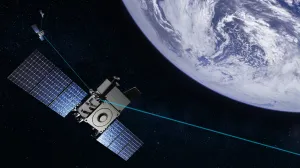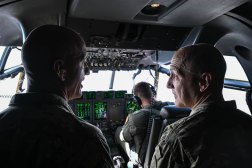At least 2 vendors will move into next phase of Air Force’s CCA drone program

AURORA, Colo. — The Air Force will move forward with at least two vendors for the next phase of its collaborative combat aircraft (CCA) program within “the next few months,” Secretary of the Air Force Frank Kendall told reporters Tuesday.
The service has confirmed that five companies are currently contracted for the initial stages of the CCA program — Boeing, General Atomics, Lockheed Martin, Northrop Grumman and Anduril. Over the coming months, it will evaluate those vendors and down-select to two or three contractors that will move into the next developmental phase, Kendall said during a roundtable with reporters at the annual AFA Warfare Symposium.
“The next phase is going to take us into development for production, and then we’ll be moving forward and in a couple of years to down-select for production,” Kendall said. “How many will be able to carry into production is still uncertain. It is definitely one, but there’s a possibility that we could do more.”
The service wants to acquire CCA drones that will fly alongside the sixth-generation fighter jets that are in the works — known as Next-Generation Air Dominance (NGAD) systems — and fifth-generation aircraft that are currently in the fleet. The drones could be equipped to perform a variety of missions — such as offensive strike, intelligence, surveillance and reconnaissance — in order to augment crewed platforms.
The Air Force is likely to buy at least 1,000 CCAs, Kendall has previously said. The goal is to begin fielding the systems by the end of fiscal 2028.
The service plans to field CCAs in increments, and the five vendors in line for down-select are part of the first iteration known as increment one. The capabilities in the initial tranche have been determined by what technologies industry can offer within the timeline that the Air Force has set, Andrew Hunter, assistant secretary of the Air Force for acquisition, technology and logistics, told reporters during a separate roundtable at the AFA conference.
Kendall noted that while the Air Force would like to have three vendors vying for the next phase of increment one, the service’s current budget would likely only support two. In its budget request for fiscal 2024, the Air Force indicated that it planned to spend more than $6 billion on the program and projects related to it over the next five years.
“Three is going to be difficult because of the level of funding we have in the budget,” he said. “With some cost-sharing with industry, I think we could do three and that would be our preference, so we’re going to be working out some way to do that.”
For increment two, the Air Force also plans to award two efforts in the upcoming fiscal 2025 budget that will fund similar work that they’re conducting with the current five vendors in increment one.
“Increment two will potentially be a very different set of requirements that the Air Force needs,” Hunter said. “For increment two, we’re going to be initiating that process in FY ’25. We’ll be kicking off a process with industry to really start to narrow in on what the increment two is going to be.”
As the Air Force moves forward with the upcoming down-select, the service is also working with a separate group of companies to establish the enabling software for CCAs, Hunter told DefenseScoop during the roundtable. Those efforts are independent of the individual CCA increments, but instead are focused on establishing the foundational software elements for the drones that are needed in every tranche, he said.
“Our architecture for core-enabling software capabilities is something that is always ongoing,” Hunter said. “That is a core capability … It’s one of the foundational architectures of the CCA effort, and so it will be very similar across increments.”
However, each increment does have its own specific software requirements that the vendors will work on. Companies will have a set of “key software tasks” that they’ll need to accomplish if they hope to move forward in increment one, he noted.






